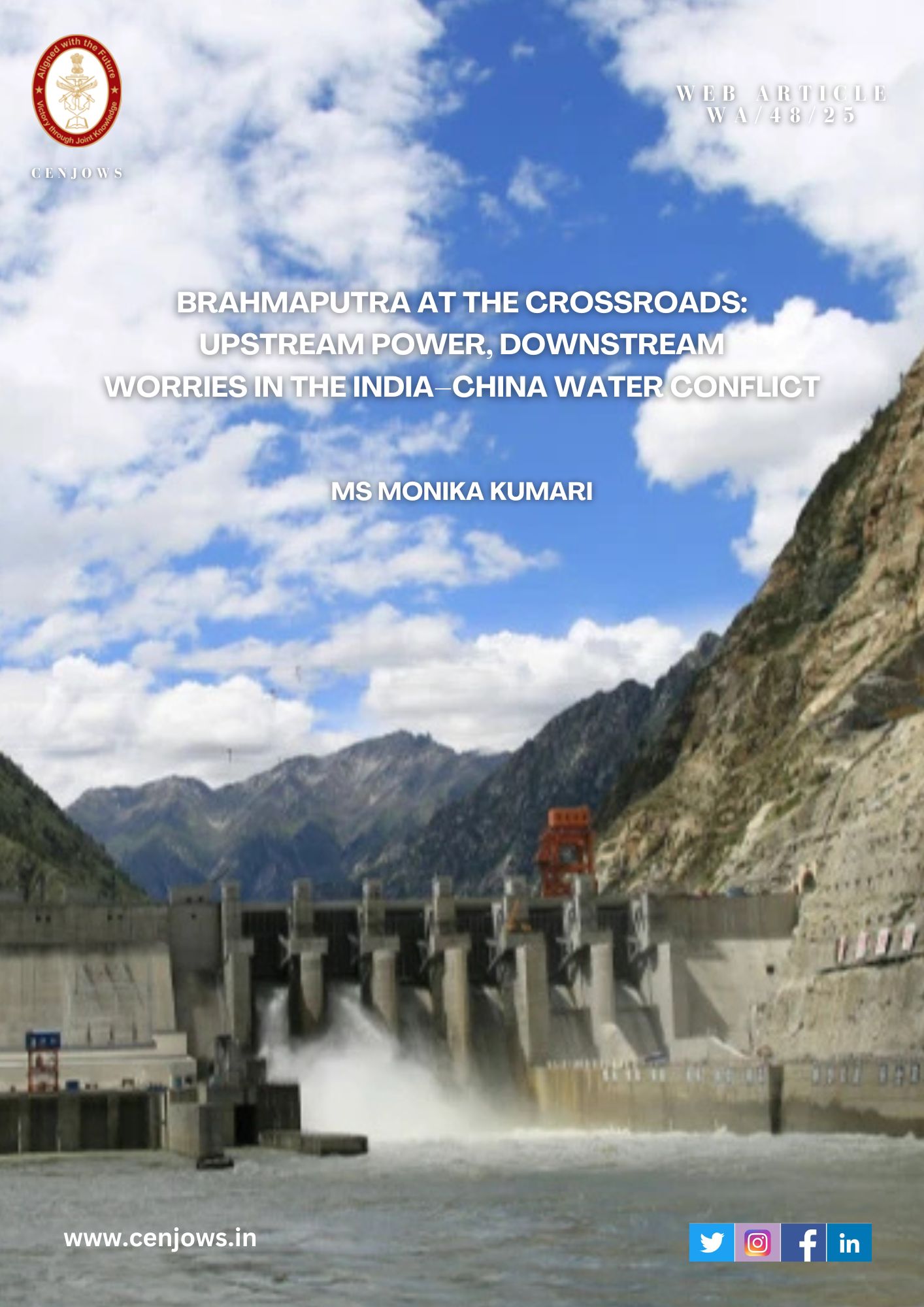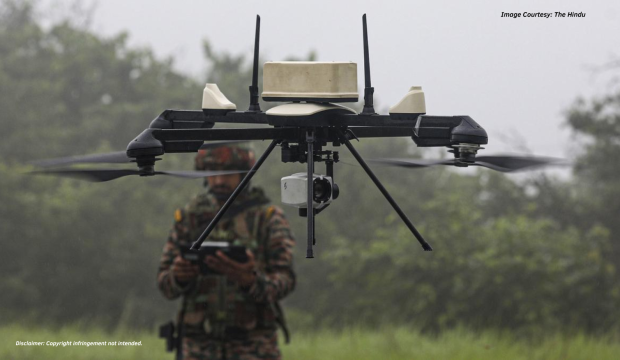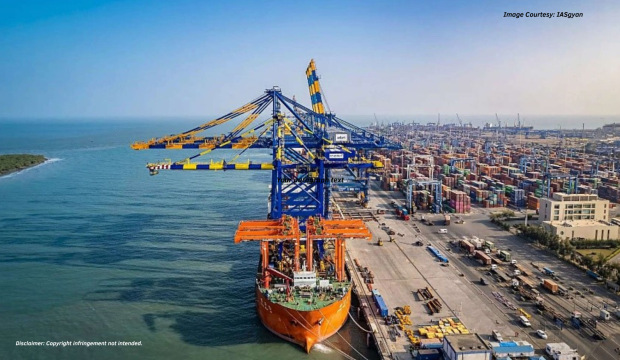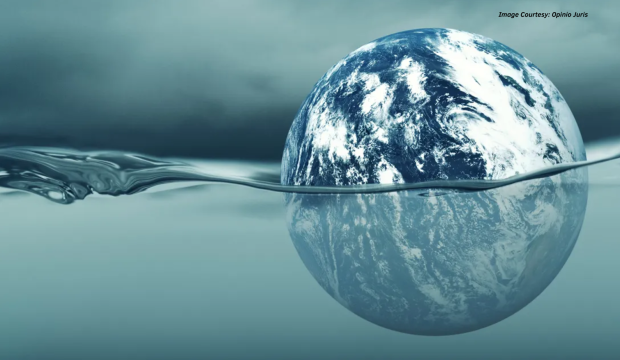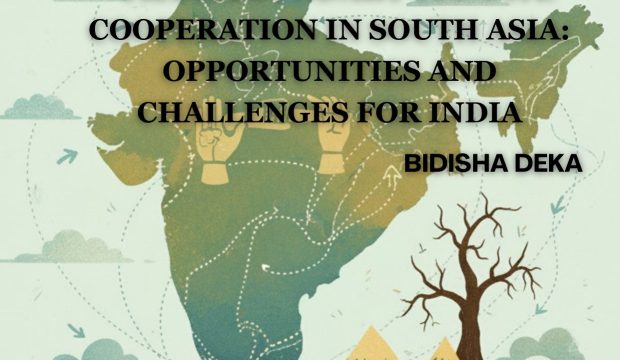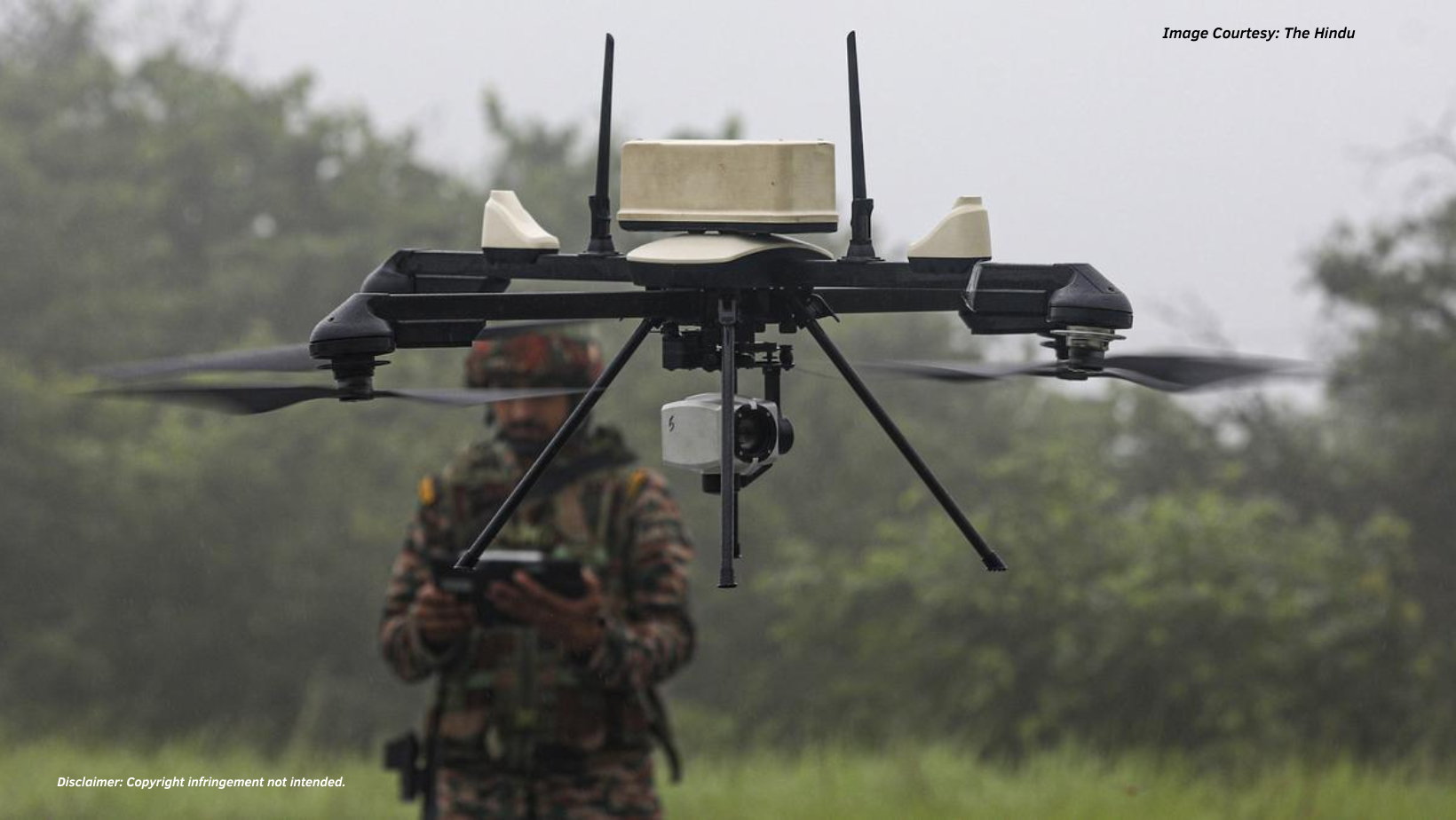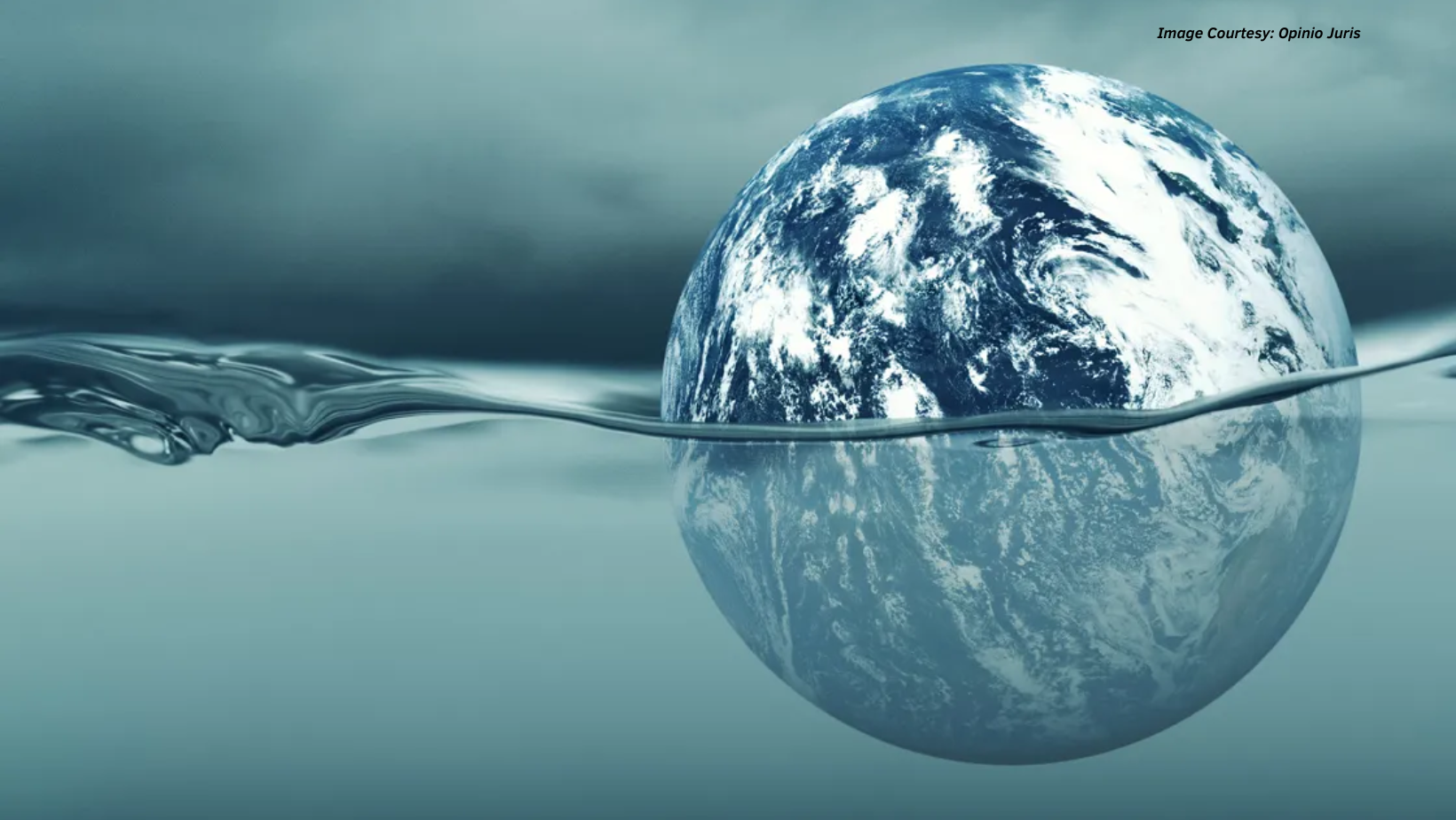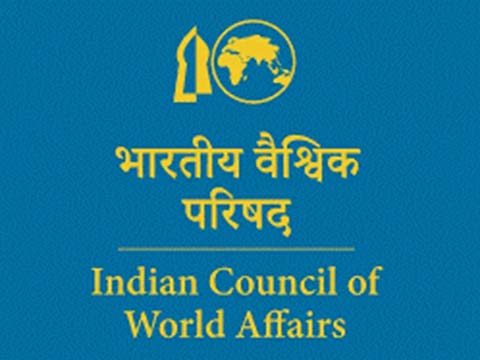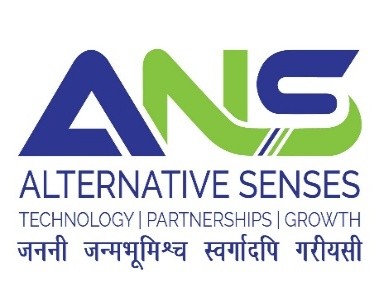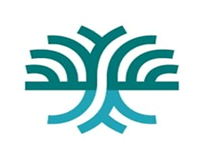Introduction
In December 2024, China approved the Construction of the Medong Hydropower Station, a mega dam project on the Yarlung Tsangpo, which becomes the Brahmaputra downstream. With actual capacity of 60GW, annual generation of 300 billion kWh, and an investment touching $167 billion, there’s already a very big dam in China called the Three Gorges Dam, which makes a lot of power.iBut this new dam on the Yarlung Tsangbo river is planned to be even bigger. It might make three times more electricity than China’s famous Three Gorges Dam. That’s a huge amount of clean energy enough to light up many homes and help China move closer to its clean energy goals.ii
China officially began its construction in July 2025, and China called it the “project of the century.”iii The dam is being built near the Great Bend of the Brahmaputra River, close to India’s Arunachal Pradesh. This has raised serious concerns in both India and Bangladesh. People are worried that it might reduce the flow of water downstream, which could damage farming and the environment, also it can affect the lives of millions who depend on the river.iv
China’s Dams on the Brahmaputra: Control, Risks, and India’s Response
China is located upstream on the Brahmaputra River, which gives it a natural upper hand. But most of the river’s total water about 65% to 85% actually comes from the Indian side, especially through monsoon rains and smaller rivers flowing from Arunachal Pradesh, Assam, and even Bhutan. On the other hand, China’s contribution to the river mainly from snowmelt and rainfall on the Tibetan Plateau is much less, only around 15% to 35%.v Despite this, China has more control because of its location at the source of the river. There is no formal water-sharing agreement between India and China or with Bangladesh. Instead, both countries rely on seasonal data-sharing memorandums. But these are fragile. In 2017, during a military standoff in Doklam, China suddenly stopped sharing flood and rainfall data, showing how political tensions can impact water cooperation.vi
One of the biggest concerns now is China’s decision to build the world’s largest hydropower station at Medog in Tibet. The dam is being built in a place where the river drops 2000 meters in just 50 kilometres. Engineers plan to build tunnels and dams in the Namcha Barwa mountains. This project could produce around 60000 megawatts of electricity which is almost double the power of China’s biggest dam today.vii China says the dam will be “run-of-river,” meaning it will not store huge amounts of water. But downstream countries like India and Bangladesh are still concerned.
Apparently, this mega project is rendered to be problematic because of its geographical closeness to LAC to China, it turns out to be all the more dangerous because of China’s plan for the Upper Reaches of the same river in the Tibet.viiiAs per Mr. Kiren Rijiju, Union Minister of parliamentary affair of India, this project would be a great strategic importance for India’s national Security as it would be timely response over China’s disobedience rule of law and its growing control over India’s maritime neighbourhood.ix
In addition to generating energy, the project will be crucial for flood management in the Brahmaputra basin. Assam and its neighbouring areas frequently experience devastating floods during the monsoon season. By conserving excess water and controlling river flow, the initiative can assist in lighten this issue. In a strategic sense, it enhances India’s infrastructure in a sensitive border area and upholds its rights as a lower river state, especially in reaction to China’s hydropower projects on the upper Yarlung Tsangpo.x
Downstream Impact
The Brahmaputra River is an essential resource in Assam. In addition to helping with agriculture, the river is crucial for wildlife, especially in Kaziranga National Park. Although the river’s yearly floods can be challenging, they are essential to the storage of the grasslands and wetlands. Additionally, these floods help to create the stable and safe environments that species at risk like dolphins in rivers but if dams upstream change the timing or strength of the floods, it can hurt nature. It may damage animal habitats and disturb the entire ecosystem.xi India responded with diplomatic caution, emphasizing the need for transparency and prior notification under international norms. External Affairs Ministry officials reiterated that while the dam is being built on China’s territory, the transboundary nature of the Brahmaputra demands cooperation and data-sharing to avoid ecological disasters downstream.xii
China might try to divert the Brahmaputra River in the future. But most studies say that the river mainly depends on rainfall and smaller rivers inside India. So, China cannot fully control its flow.xiiiThe sudden water release, poor dam management, or long-term changes in how soil and sand flow with the river. Even small changes in water flow and timing upstream can slowly harm the whole river system downstream. That’s why India needs a better way to watch and study the river. In the past, China stopped sharing river data during tense times, showing that we can’t rely only on trust. India should build its own tools using satellites and open platforms to track river data in real time.xiv
India should also work towards setting up a formal Brahmaputra River Commission with China, India and Bangladesh as members. This kind of body can help with regular sharing of data, joint studies on the environment and building trust among the countries. India can also use platforms like the UN Watercourses Convention or even global groups like the Quad to highlight China’s lack of transparency in dam-building.xvAt the same time, India’s own hydropower projects, like the Upper Siang dam, should only move ahead with full support from local communities. This means fair compensation, proper relocation, and planning that respects local culture. Even leaders like Arunachal Pradesh Chief Minister Pema Khandu have said that no project should happen without the people’s consent.xvi
Conclusion
China’s construction of the Medog Dam on the Yarlung Tsangpo is a clear example of its attempt to control the flow of the river before it enters India. Without consulting India or considering the ecological impact, China has moved ahead with the project in a non-transparent and unilateral way. Its continued refusal to share important hydrological data, especially during sensitive periods, further shows an irresponsible approach to shared water resources. This is not just about development but a strategy to influence the region’s water security. India, on the other hand, has responded with maturity and strength. With a major share of the Brahmaputra flowing through its territory, India is focusing on sustainable development, ecological balance, and the involvement of local communities in regions like Upper Siang. Instead of reacting fast India is taking a smart and principled approach strengthening its internal capabilities, promoting transparency, and pushing for fair and cooperative river management. By leading through responsibility and resilience, India is setting the right example. The Brahmaputra should be a symbol of regional cooperation not a means for any country to impose control.
DISCLAIMER
The paper is author’s individual scholastic articulation and does not necessarily reflect the views of CENJOWS. The author certifies that the article is original in content, unpublished and it has not been submitted for publication/ web upload elsewhere and that the facts and figures quoted are duly referenced, as needed and are believed to be correct.
References
i. Farah Master and Samuel Shen, “China Embarks on World’s Largest Hydropower Dam, Capital Markets Cheer,” Reuters, July 21, 2025 ( URL) : https://www.reuters.com/sustainability/climate-energy/china-embarks-worlds-largest-hydropower-dam-capital-markets-cheer-2025-07-21/?utm_source=chatgpt.com
ii.China Starts Construction of World’s Biggest Hydropower Dam in Tibet,” Al Jazeera, July 22, 2025,(URL) https://www.aljazeera.com/news/2025/7/22/china-starts-construction-of-worlds-biggest-hydropower-dam-in-tibet
iii. Soo Kim, “China’s ‘Project of the Century’ World’s Biggest Hydropower Dam—Is Underway,” Newsweek, July 21, 2025,(URL) https://www.newsweek.com/china-worlds-largest-hydropower-dam-construction-begins-2104185
iv.Aniket Jha, “After India, Bangladesh Seeks Answers from China on Medog Dam on the Brahmaputra,” The Telegraph India, March 27, 2025,(URL) https://www.theguardian.com/world/2025/jul/21/china-starts-building-world-biggest-hydropower-dam-yarlung-tsangpo-river-tibet?utm_source=chatgpt.com
v. Business Today Desk. 2025. “’China contributes 35% but India 65% of total flow’: Himanta Biswa dismantles Pakistan’s ‘scare narrative’ over Brahmaputra.” Business Today, June 3.(URL): https://www.businesstoday.in/india/story/china-contributes-35-but-india-65-of-total-flow-himanta-biswa-dismantles-pakistans-scare-narrative-over-brahmaputra-478760-2025-06-03
vi.NatStrat, “India–China Cooperation in Water Resources: Expert-Level Mechanism,” NatStrat, April 2023, accessed July 28, 2025, https://www.natstrat.org/articledetail/publications/india-china-cooperation-in-water-resources-expert-level-mechanism-188.html.
vii.The Guardian, “China Starts Building World’s Biggest Hydropower Dam,” The Guardian, July 21, 2025,(URL) https://www.theguardian.com/world/2025/jul/21/china-starts-building-world-biggest-hydropower-dam-yarlung-tsangpo-river-tibet
viii.The Times of India, “B’putra Water Flow Not Dependent on China: Himanta Busts Pak Scare Narrative,” The Times of India, June 4, 2025. (URL): https://timesofindia.indiatimes.com/city/guwahati/bputra-water-flow-not-dependent-on-china-himanta-busts-pak-scare-narrative/articleshow/121605096.cms
ix.The Arunachal Times, “Siang Upper Multipurpose Project in Arunachal Is Strategic Necessity: Rijiju,” June 10, 2025, accessed August 6, 2025, https://arunachaltimes.in/index.php/2025/06/11/siang-upper-multipurpose-project-is-strategic-necessity-rijiju/.
x.Ibid
xi.Drishti IAS. 2020. “Assam’s Flood and Kaziranga’s Ecosystem.” Drishti IAS Daily News Analysis, July 18. (URL): https://www.drishtiias.com/daily-news-analysis/assam-s-flood-and-kaziranga-s-ecosystem#:~:text=The%20regenerative%20nature%20of%20floods,tributaries%20upstream%20in%20Arunachal%20Pradesh.
xi.Vajiram & Ravi, “China’s Dam Project Opens the Floodgates of Concern,” UPSC Current Affairs Daily Analysis, February 14, 2025.(URL): https://www.telegraphindia.com/world/after-india-bangladesh-seeks-answers-from-china-on-medog-dam-in-brahmaputra/cid/2091085
xii.The Times of India, “B’putra Water Flow Not Dependent on China: Himanta Busts Pak Scare Narrative,” The Times of India, June 4, 2025, accessed July 28, 2025, https://timesofindia.indiatimes.com/city/guwahati/bputra-water-flow-not-dependent-on-china-himanta-busts-pak-scare-narrative/articleshow/121605096.cms
xiv.Boyé, Henri, and Michel de Vivo. 2016. “The Environmental and Social Acceptability of Dams.” Field Actions Science Reports, Special Issue 14. OpenEdition Journals. Accessed July 28, 2025. https://journals.openedition.org/factsreports/4055.
xv.Prosper Malangmei, “India–China Brahmaputra River Dispute: A Legal Framework Based on International Law,” International Journal of Science and Research 14, no. 3 (March 2025): 952–956, accessed July 31, 2025, https://dx.doi.org/10.21275/SR25320081059
xvi.The Economic Times, “The Great Dam Game: As China Pushes Ahead with a Mega Dam, India’s Counterplan Sinks in Local Resistance,” The Economic Times, July 27, 2025,(URL): https://economictimes.indiatimes.com/news/india/the-great-dam-game-as-china-pushes-ahead-with-a-mega-dam-indias-counterplan-sinks-in-local-resistance/articleshow/122930065.cms

Ms. Monika Kumari
is a Research Intern at CENJOWS

